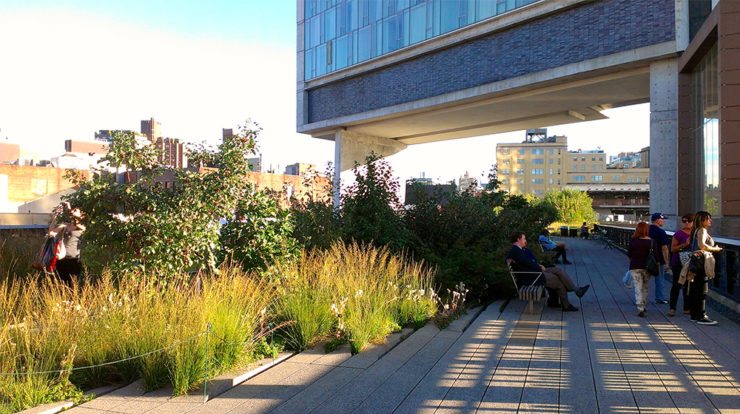

News
Republishing Economics of Biophilia with PRISM
Rebecca Macies
Share
We’re excited to announce that we are republishing The Economics of Biophilia with PRISM. This six part series will be released on PRISM’s online journal. They will include updates to the original report including new research and examples that show the impact of designing with nature in mind. Each installment explores economic indicators as they relate to biophilic design in six sectors: workplace, health care, education, retail, hospitality, and community.
PRISM Sustainability in the Built Environment (SBE) is a unique online journal, resource and cooperative effort to further sustainable building for both emerging and experienced architects, specifiers, consultants, builders, suppliers, and users of sustainable building materials.
Part 1: Introduction
Biophilia, the innate human attraction to nature, is a concept that has been recognized for several decades by the scientific and design communities, and intuitively for hundreds of years by the population at large. Whether it is hospitals that allow patients to heal more quickly, offices that boost productivity, schools that improve test scores, or retail outlets with higher sales, we make the business case for incorporating biophilia into the places where we live and work.
Part 2: The Economic Advantages of Biophilia in Sectors of Society: Workplace
The average US employee spends more than 43 hours per week in the office. Biophilic design elements in the workplace environment not only support the health and wellbeing of employees, but can also increase productivity and contribute to employee satisfaction.
Part 3: The Economic Advantages of Biophilia in Sectors of Society: Schools
The classroom is perhaps the most influential environment outside the home, where children learn and grow. Integrating biophilic design into schools can support academic performance, decrease stress, and contribute to an environment that supports students.
Part 4: The Economic Advantages of Biophilia in Sectors of Society: Healthcare
In 2016, the U.S. spent $3.3 trillion on healthcare. Current research suggests that incorporating even small elements of biophilic design into the healthcare settings can improve patient outcomes, reduce the need for pain medication, reduce stress, and improve the working environment for those caring for patients.
Part 5: The Economic Advantages of Biophilia in Sectors of Society: Retail
The dramatic shift to online shopping is forcing retail brands to rethink customer experience and explore new ways to breathe life into in-store shopping. By acknowledging important tenets of environmental psychology in conjunction with our innate desire to affiliate with nature, biophilic retail spaces can improve occupant experience, ultimately translating into increased revenue.
Part 6: The Economic Advantages of Biophilia in Sectors of Society: Community
The value of nature in communities is illuminated by human decision-making. When people are deprived access to nature and its many benefits, there are economic consequences—specifically in health and societal costs. Conversely, the added benefit to humans is calculable and substantial. Access to parks and views to nature within a community may be a cost-effective strategy to reduce the impact of our medical and social problems.
Header image: Kārlis Dambrāns /Flickr
Rebecca Macies
Rebecca is the Director of Operations at Terrapin and has a background in natural resource policy and management. She is interested in how policy helps shape our relationship to nature, and how we can work with and learn from natural systems to address human needs.
Topics
- Occupant Comfort
- Materials Science
- Speaking
- LEED
- Terrapin Team
- Phoebe
- Community Development
- Greenbuild
- Technology
- Biophilic Design Interactive
- Catie Ryan
- Spanish
- Hebrew
- French
- Portuguese
- Publications
- Carbon Neutrality
- Environmental Values
- Conference
- Psychoacoustics
- Education
- Workshop
- Mass Timber
- Transit
- Carbon Strategy
- connection with natural materials
- interior design
- inspirational hero
- biophilia
- economics of biophilia
- Sustainability
- Systems Integration
- Biophilic Design
- Commercial
- Net Zero
- Resorts & Hospitality
- Energy Utilization
- Water Management
- Corporations and Institutions
- Institutional
- Ecosystem Science
- Green Guidelines
- Profitability
- Climate Resiliency
- Health & Wellbeing
- Indoor Environmental Quality
- Building Performance
- Bioinspired Innovation
- Biodiversity
- Residential
- Master Planning
- Architects and Designers
- Developers and Building Owners
- Governments and NGOs
- Urban Design
- Product Development
- Original Research
- Manufacturing
- Industrial Ecology
- Resource Management
- Sustainability Plans
- Health Care


